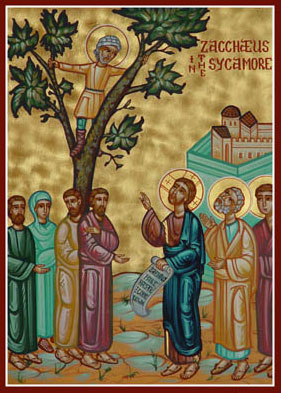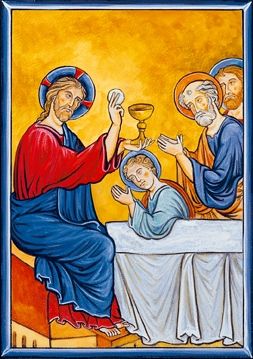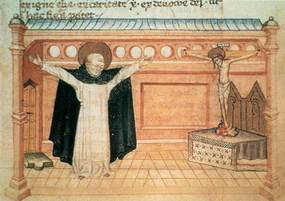
Spiritual Life: October 2010 Archives

 Some friends and I at the parish have been reading a series of Pope Benedict's homilies on the Eucharist taken from his book, God is Near Us. I recommend paying attention to every page of this small collection of Benedict's. Reading through some meditations of Blessed Columba Marmion, the famed Benedictine monk and spiritual master struck me. He wrote,
Some friends and I at the parish have been reading a series of Pope Benedict's homilies on the Eucharist taken from his book, God is Near Us. I recommend paying attention to every page of this small collection of Benedict's. Reading through some meditations of Blessed Columba Marmion, the famed Benedictine monk and spiritual master struck me. He wrote, It would be a pity to forget last Sunday's first
reading where we read of Moses' role as mediator of God's saving plan.
It would be a pity to forget last Sunday's first
reading where we read of Moses' role as mediator of God's saving plan.
The Order of Capuchin Friars Minor opened a center for spirituality and formation for religious and laypeople who want to attend courses and retreats in that region. The center, which is inspired by the motto, "I am the light of the world," was inaugurated 28 September 2010.
At the inauguration ceremony, Archbishop Fouad Twal, Latin patriarch of Jerusalem, noted that this light is the witness that believers make to those around them. He added that this idea "is a topic of our next synod," which will take place in Rome, beginning Sunday, and will focus on the Middle East.
"In Jerusalem, we can count on hundreds of religious congregations, 14 of which are contemplative communities," the prelate said. "They are the strength and richness of the Latin Catholic Church." He continued: "Today we inaugurate a new center for spirituality and welcome, thanks to the goodwill of our beloved Capuchins, a center called to be light." "True Christians influence the world around them and reflect the light of the Lord," the archbishop affirmed.
The property where the center is located belonged to the Capuchin order since the 1930's, when Archbishop Luigi Barlassina invited the religious to build a convent in the Jewish area of Jerusalem.
However, the friars had to leave Jerusalem during World War II, putting the project on hold. The property was taken over by the state for a psychiatric hospital. The Capuchin center project was later revived in the 1990's.
Present at the inauguration ceremony were: Fr. Mauro Jöhri, Capuchin General Minister and the entire Definitory; His Beatitude, Archbishop. Fouad Twal, Latin Patriarch of Jerusalem; Archbishop Antonio Franco, Apostolic Delegate in Jerusalem and Apostolic Nuncio in Israel; Fr. Pierbattista Pizzaballa, OFM, Custos of the Holy Land; Bishop Francesco Beschi, Bishop of Bergamo; the Capuchin Order's Legal Representative, the General Bursar, the Capuchin Provincial Minister of Venice, other Franciscan Provincials.
The renovation was made possible by a number of benefactors, with a considerable contribution from the Cariplo Foundation.
A photo journal of the center's dedication is here.
The Latin Patriarch of Jerusalem posted a story on the center.
Zenit carried a story on this center.
(this
story is reposted and edited from Capuchin Newsnotes, 13 October 2010)

